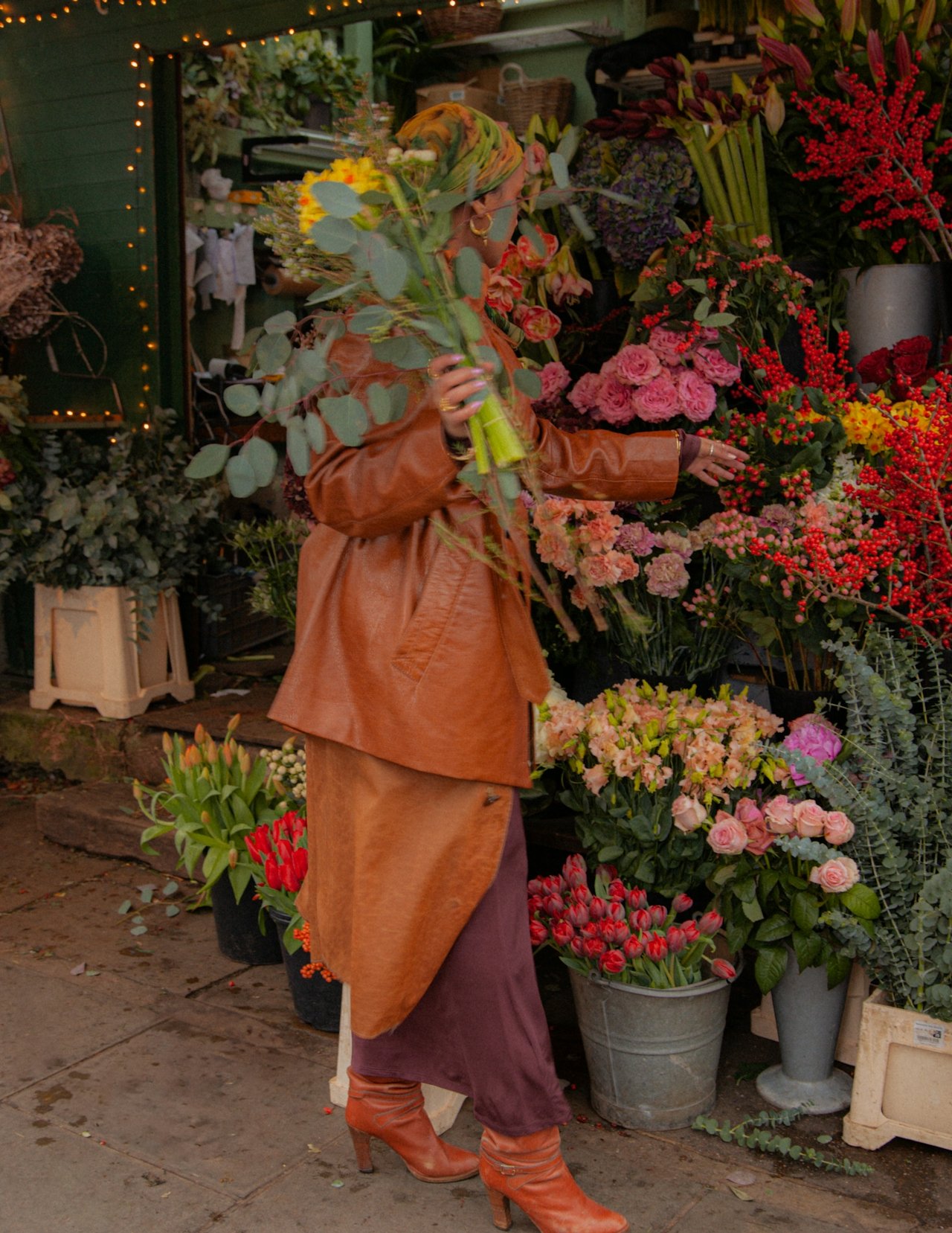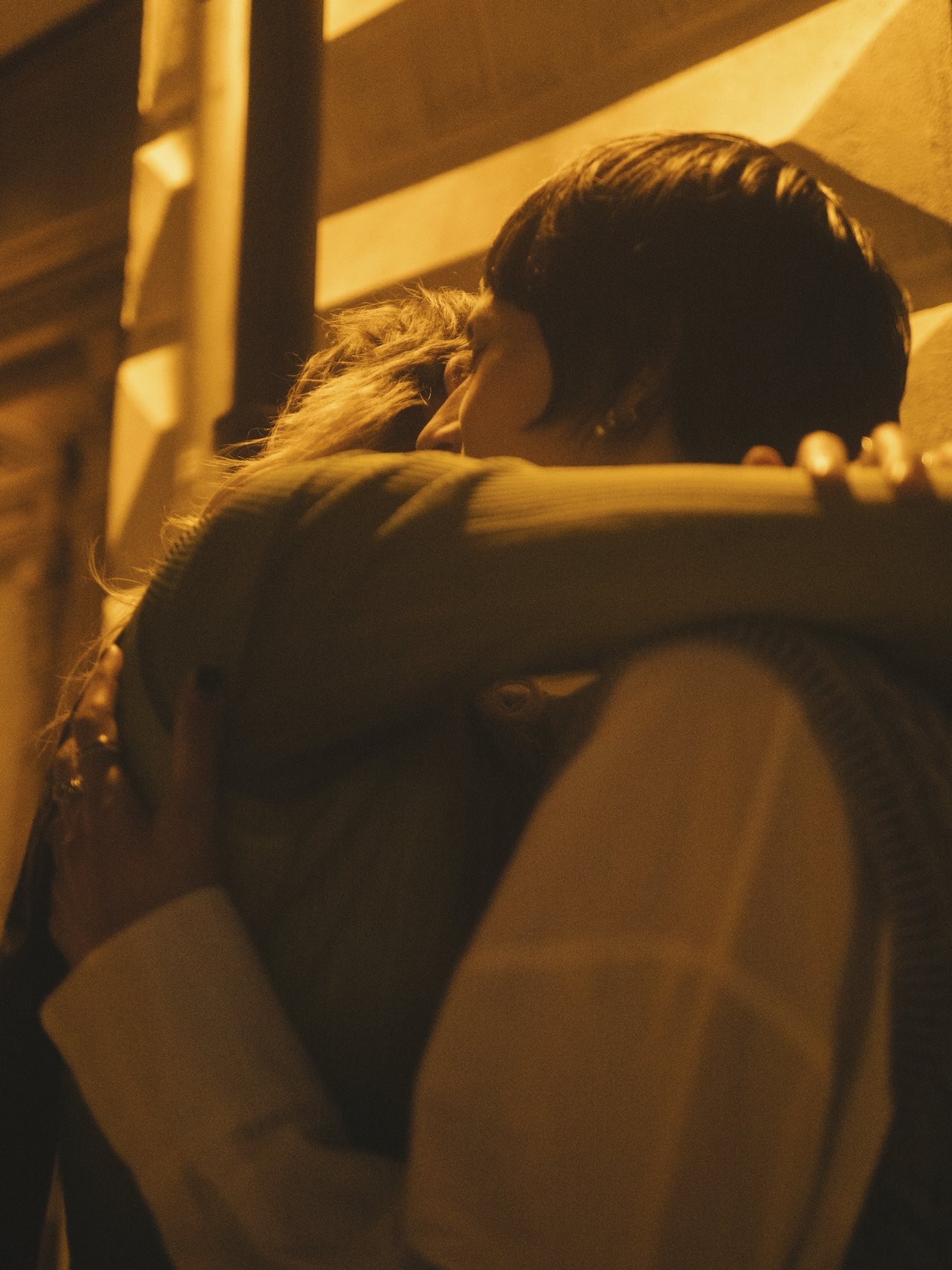
The Importance of Finding an Inclusive Therapist for Your Needs

Esther Perel: Why Connection and Relationships Are Essential to Healing
Esther Perel reminds us that healing does not happen in isolation. With roots in her family’s history as Holocaust survivors, her work is a bold pursuit of joy, intimacy, and connection. From her TED Talks to her podcast Where Should We Begin?, she shows us that relationships are not distractions from self-care, they are central to it.

Irvin Yalom and Existential Therapy: Lessons on Meaning, Mortality, and Connection
Irvin Yalom saw therapy not as fixing people but as walking beside them as a fellow traveler. His existential approach invites us to face life’s biggest questions—freedom, meaning, mortality—with openness and connection, reminding us that growth happens in relationship.

Carl Rogers and Humanistic Therapy: Why the Father of Person-Centered Therapy Still Inspires
Carl Rogers believed therapy isn’t about “fixing” people, but about creating a safe, compassionate relationship where growth can naturally happen. Often called the father of humanistic therapy, and kind of the Mr. Rogers of the therapy world, he showed that unconditional positive regard and deep understanding are powerful antidotes to shame. His work reminds us: healing starts with being seen, heard, and accepted exactly as we are.

Online Therapy for Anxiety: Does It Work and Is It Right for You?
[Photo credit: Tino Renato]
Online therapy for anxiety can be just as effective as in-person, and way more accessible. Learn how virtual therapy helps reduce overthinking, stress, and nervous system overload.

8 Types of Therapy Compared: CBT, DBT, ACT, IFS & More Explained Simply
[Photo credit: Daniel Farò]
Not sure which type of therapy is right for you?
CBT, DBT, ACT, IFS—it’s a lot of letters, and even more opinions. This guide breaks down 8 common therapy styles in plain language, so you can find what fits your needs. No jargon, no pressure—just clear info to help you choose your next step in healing.

Anxiety Therapy: What It Is, How It Works, and When to Reach Out
[Photo credit: Nick Fancher]
Anxiety isn’t just in your head—it’s in your body, your habits, your everyday.
It’s the overthinking, the racing heart, the constant readiness for something to go wrong.
It’s exhausting. And it’s more common than you think.
Anxiety therapy helps you understand those patterns—and gently shift them.
Not to “fix” you, but to help you feel more at ease in your own life.
You don’t have to stay in survival mode. There’s support for what you’re carrying.

When Your Sex Drive Is in Hibernation: 5 Books That Bring A Little Spice
[Photo Credit: Daniel Faro]
So… your sex drive disappeared. Not forever. Not because you're broken. Just gone. For high-achieving perfectionists, burnt-out bi+ babes, and anyone untangling religious shame, this can feel like one more thing you’re “supposed” to fix. But desire doesn’t respond to pressure. It responds to play.

Wanting to Be Seen vs. Being Known: The Fame Trap
[Photo Credit: Jelly Luise]
For closeted queer youth, fame can feel like freedom. It promises visibility, validation, and the chance to rewrite a hidden past. But being seen isn’t the same as being known—and no amount of spotlight can heal the ache for real connection. True healing doesn’t come from applause; it comes from intimacy, self-acceptance, and building a life that feels like yours. The dream isn’t wrong—but the question underneath it matters: Are you chasing a stage, or creating a life where you already belong?

How to Cultivate Curiosity and Hope: A Practice for Personal Growth and Passion
[Photo credit: Daniel Faro]
Curiosity is a powerful form of self-care—especially when you're feeling burned out, stuck, or unsure of who you’re becoming. It invites you to explore without pressure, ask gentle “what ifs,” and follow what sparks interest or admiration. You don’t need a plan—just a willingness to wonder. In that wondering, hope begins.

Wear What Feels True: Dressing for Yourself
[Photo credit: Jessica Madavo]
Discover how dressing authentically can support your mental health, affirm your gender identity, and challenge societal beauty standards. This post explores the power of personal style as a tool for self-expression, courage, and liberation.

Free Self-Care: 25 Bizarre Ways to Take Care of Yourself
[Photo credit: Franco Dupuy]
Tired of Bubble Baths? Try a Blanket Burrito Instead.
Let’s be honest: self-care advice starts to feel like déjà vu after a while. Bubble baths, journaling, meditation—great, but what if your brain just yawns at the thought? Sometimes, what we really need isn’t more calm—it’s a little chaos. A jolt of joy. A nudge toward the absurd.
This list is for when the usual self-care routines feel stale. These 25 weird, free, and slightly unhinged ideas are designed to reset your mood, not your credit card balance. Because sometimes, the most healing thing you can do is wrap yourself in a blanket like a burrito and roll around the living room. Trust me—it’s therapy, just louder.

Why Coming Out Matters: LGBTQ+ Self-Discovery Musings
[Photo credit: Fanette Guilloud]
Why Coming Out Matters
Coming out isn’t a one-time event—it’s an ongoing act of self-discovery, a commitment to living more freely and authentically. For many in the LGBTQ+ community, embracing your identity can feel like finally taking a deep breath after years of holding it in.
What if exploring your bisexuality—or any part of who you are—isn’t just about finding a partner, but about finding yourself? What if life gets even better when you stop editing your truth to fit someone else’s comfort?
This journey isn’t linear. Some days are full of clarity, others bring doubt. But every step is part of becoming. And when you live your truth, you make room for others to do the same. The courage to explore possibility is not just a gift to yourself—it’s a quiet revolution.

Building Trust: How to Cultivate Deeper, More Secure Relationships
[Photo Credit: Chris Abatzis]
Building Trust Isn’t All or Nothing
We often think of trust as something we either have or don’t. But in reality, trust is a process—like tending a garden. It grows over time through consistent, intentional actions: really listening, communicating honestly, showing up reliably, and sharing ourselves gradually. Trust doesn’t demand perfection; it asks for presence, empathy, and effort. Whether in friendships, partnerships, or therapy, every small act of trustworthiness is a seed that deepens connection and safety.

Making Peace with Being Single: Finding Emotional Support and Love Everywhere
[Photo Credit: Agustin Farias]
“Smiling into the heart. It’s not to cover over what’s there but rather to create that space…” – Tara Brach
Being single doesn’t mean being unloved. In fact, some of the deepest emotional support can come from friendships, chosen family, community, and the quiet joy of your own company. When you stop seeing singlehood as a lack and start noticing love in the everyday—a friend who checks in, a child’s laugh, the comfort of solitude—you begin to understand: you’re not waiting for love. You’re already living in it.
Instead of measuring your life by what’s missing, what if you celebrated what’s here? Love is the shared meal, the late-night text, the memory that makes you smile. It’s not about finding “the one”—it’s about honoring all the ways love already shows up. Being single isn’t a placeholder. It’s a life. A whole, worthy, beautiful life.

Identity Exploration: Finding Your Gender, Finding Yourself
[Photo Credit: Agustin Farias]
Somewhere between the red dress that made me feel electric and the craving for something more masc, more me, I realized: this isn’t just about clothes. It’s about becoming. Every outfit is a chance to get closer to who I am—not the version others expect, but the one I’m uncovering piece by piece.
Gender, like fashion, isn’t a fixed answer. It’s a feeling. A dance between expression and identity. Sometimes it’s a wedding dress. Sometimes it’s a leather jacket. Sometimes it’s something you haven’t tried yet but know will feel like home.
And that moment—when how you look finally matches how you feel on the inside? That’s gender euphoria.
This journey of identity exploration is about more than aesthetics. It’s a quiet revolution. A reclaiming. A reminder that you don’t owe anyone a label, just your truth. So try things on. Break the rules. Make new ones. And when you find something that feels like you—wear it like a flag.
Because your freedom might just give someone else permission to begin.

Joy as Resistance: Why We Need Joy in Burnout Recovery
[Photo credit: Chris Abatzis]
In the midst of burnout, it can feel like joy is the first thing to go—and the last thing we think we deserve. But joy isn’t a reward for healing; it’s part of the healing itself. In a world that constantly demands more, choosing joy becomes a radical act. It’s a way of saying, I am more than what I produce. I deserve to feel alive, even when the world is on fire.
This piece explores how joy not only sustains us in our burnout recovery, but actively resists the systems that benefit from our exhaustion. Whether it’s dancing in your kitchen, laughing with a friend, or finding softness in silence—joy is proof that hope is still here. And that’s worth holding onto.

Relationship Therapy: Setting Self-Respect Standards in Dating
[Photo Credit: Agustin Farias]
Relationship Therapy: Setting Self-Respect Standards in Dating
Love shouldn't cost you your dignity.
Dating can sometimes feel like a slow erosion of self—especially if you’ve been taught that being “good” means being accommodating, quiet, or low-maintenance. But that quiet self-erasure? That’s not compatibility. That’s code-switching for survival.
The people we let in shape our reflections. If you’re constantly shrinking yourself to make someone else more comfortable—dim your opinions, mute your ambition, dull your joy—they’re not loving you. They’re managing you.
Therapy can help you see the difference.
Relationship therapy isn't just about solving problems with a partner. It’s also about understanding your patterns: Why do you stay when you feel small? Why do you justify mistreatment as “just how dating is”? A therapist trained in relational work can help you untangle that. And more importantly—they can help you raise the bar.
Because here’s the truth:
You don’t have to earn love by being less.
Self-Respect Isn’t an Obstacle—It’s a Filter
Setting standards doesn’t make you high-maintenance. It makes you intentional. When you begin to move through dating with self-respect, everything shifts. You stop chasing the attention of people who aren’t capable of meeting you. You stop explaining your needs like they’re a burden. You begin to believe that your boundaries are an invitation to know you better, not walls to keep people out.
As Maria Popova says,
“The best relationships are not those that make us feel whole—they are those that inspire us to be more wholly ourselves.”
How to Tell If You’re Shrinking for Someone Else
It can be subtle. Here are a few red flags to watch for:
You downplay your accomplishments so they don’t feel “less than.”
You find yourself editing your personality—your humor, your boldness, your needs.
You feel like you’re “too much” for them.
You’re always explaining yourself, apologizing, or second-guessing.
You feel anxious more than you feel at ease.
What Relationship Therapy Offers You
If this resonates, know you’re not alone—and you're not broken. Many of us are healing from systems that told us we had to choose between love and authenticity. Therapy gives you tools to reclaim your wholeness.
It’s not about blaming yourself for who you’ve chosen in the past. It’s about becoming the kind of person who no longer has to apologize for choosing differently in the future.
You get to want more. You get to walk away.
You get to say: If it costs me my peace, it’s too expensive.

Slowly Trusting: How to Build Trust in Therapy
[Photo credit: Marlen Stanlhuth]
Slowly Trusting: How to Build Trust in Therapy
Don’t tell your therapist anything—until you feel safe.
In a culture that celebrates “radical vulnerability,” here’s your permission to take it slow. Therapy isn't about dumping your story on someone with a clipboard. It's about building a relationship rooted in trust—and that takes time.
Why Trust in Therapy Matters
Therapy works best when there’s a real, human connection. Research backs it up: the relationship between therapist and client is the number one predictor of positive outcomes. Not credentials. Not methods. The connection.
Especially in queer-affirming therapy, trust is layered and complex. Feeling safe, seen, and not stereotyped makes all the difference. Every tiny moment—a therapist remembering your pronouns, or following up on something you said last week—becomes a deposit in the trust bank.
Building Trust, Not Performing Vulnerability
Think of it like hiking unfamiliar terrain. You don’t leap; you test the ground first. You "double-tap" the rock to make sure it’s steady. Therapy can be that way, too. Start with small disclosures. See how they’re received. Do you feel heard? Are your boundaries respected?
Online therapy (telehealth) can sometimes make this easier. It allows you to stay in a familiar environment while exploring emotional territory. And if you’re part of the LGBTQ+ community, searching for queer-affirming therapists online can be a crucial first step toward feeling safe.
Therapy Is a Journey, Not a Reveal
You don’t have to pour your heart out in session one. If your therapist is patient, warm, and consistent, you’ll start to feel that solid ground beneath you. And when you do? That’s when deeper healing begins.
So no, you don’t owe anyone your trauma on a first visit. Trust in therapy is a journey, and it’s okay to take your time getting there.

My Mental Health Survival Kit: Tools for Navigating Crisis Moments
[Photo credit: Chris Abatzis]
When anxiety, panic, or deep sadness strikes, it can feel like your whole world collapses. Time distorts, the future feels impossible, and your thoughts spiral fast. In those moments, I return to one grounding truth: Just focus on the next minute.
You don’t need to fix everything right now. You just need to breathe, ground yourself, and take it one step at a time.
This is my personal first aid kit for mental health emergencies—strategies I use when my mind is in a tailspin:
Focus on one minute at a time
Use breathwork to calm your nervous system
Try a guided meditation for anxiety relief
Do one soothing thing in the next five minutes
Seek comfort—without guilt
Connect with a pet or calming video
Use grounding techniques to stay present
Not every moment will feel good. That’s okay. You don’t have to feel good to keep going—you just have to take the next breath. And then the next. One minute at a time.

